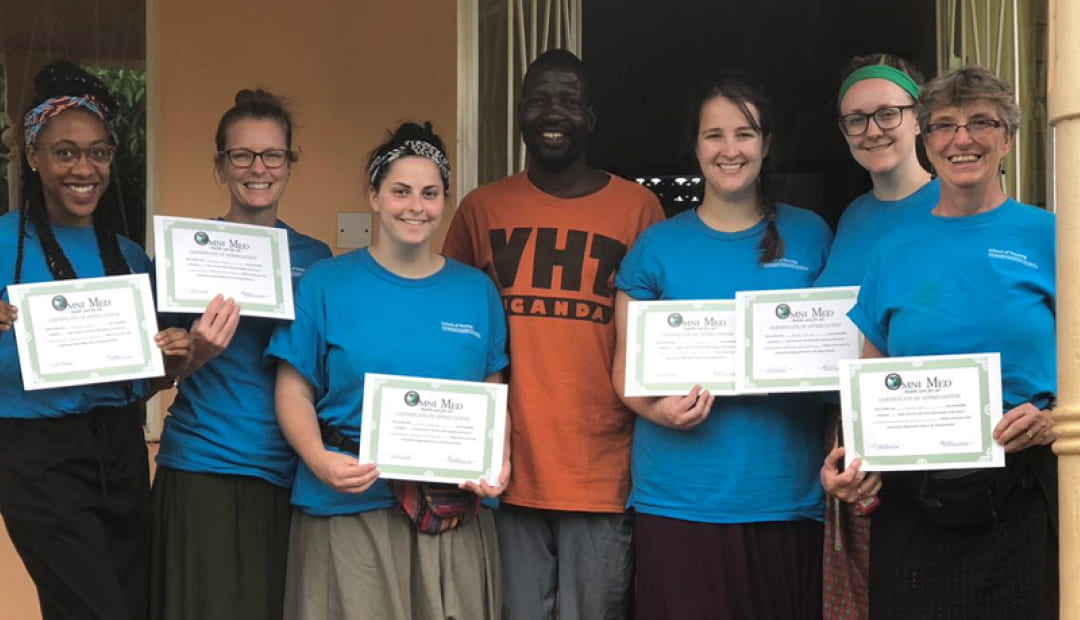Below is an excerpt from the blog “Rhonda’s GW Adventure,” written by Rhonda Krigbaum, BSN ’18, about a recent GW Nursing international clinical trip.
Uganda has five levels of health care, and we were fortunate to see a level-four health center in the Mukono District. Level one starts out with the Village Health Teams (VHTs) that we worked with throughout the week.
I will never forget walking up to the health clinic and seeing so many moms and children waiting for immunizations. I don’t think I have ever seen so many people waiting for vaccinations in the United States, because typically immunizations are part of regular doctor appointments, but this health center is full on Tuesdays, immunization day. It was encouraging to see so many people eager to get vaccinated, and they seemed to understand the importance of immunizations.
At the clinic they had a laboratory, general appointment rooms, a mental health room, a dentist, a maternity ward, an AIDS ward, a tuberculosis (TB) ward and an OR. They require everyone to take off their shoes in the OR waiting room because wearing shoes is thought to bring in more contamination than a bare foot.
During the trip, we also learned a lot about how common health issues are addressed, for example, how cookstoves are made out of a combination of ant hill mud, grass, water and banana stalks. Cookstoves filter the smoke out of the room to reduce chronic obstructive pulmonary disease (COPD) and asthma exacerbation.
We were also educated on sleeping with mosquito nets, maintaining immunizations, boiling all water even if from a clean water source, prenatal care, family planning and AIDS/STD prevention, newborn care, vaccinations and healthy foods to eat.
My favorite part of this trip was the blood pressure (BP) screenings we did in several different villages. The average life expectancy in Uganda is 58 years, and the most common cause of death from a chronic condition is cardiovascular disease. Hypertension (elevated blood pressure for those not familiar with medical lingo) is known as a silent killer because you can have high BP for years and not have any symptoms. Ugandans tend to have very high blood pressure (high-salt diet, stress, genetics, etc.). Out of all of the screenings I provided, I think only two people had “normal” blood pressure. About two-thirds of all the villagers I screened had never had their blood pressure taken before and all needed lifestyle education on ways to lower their BP. We made a BP education sheet that was translated into the local language, Luganda, and provided to every person who was screened.
We really got to spread our nursing education and work with the VHTs to train them how to take an accurate BP reading so they can continue to screen and educate their community long after we leave.
I am so proud of this nurse-driven trip and can’t believe how lucky I am to have shared my knowledge and experience on a global scale.
by RHONDA KRIGBAUM

